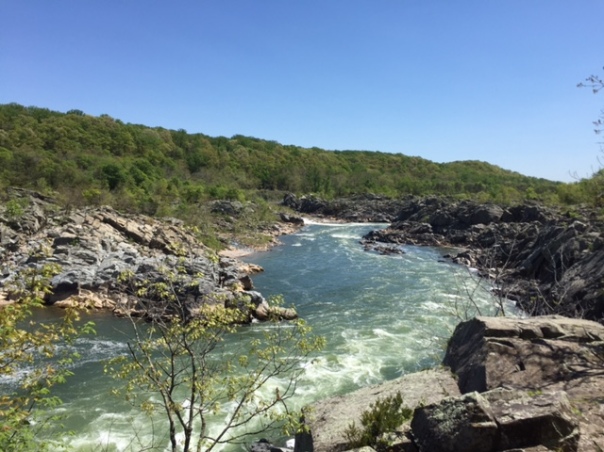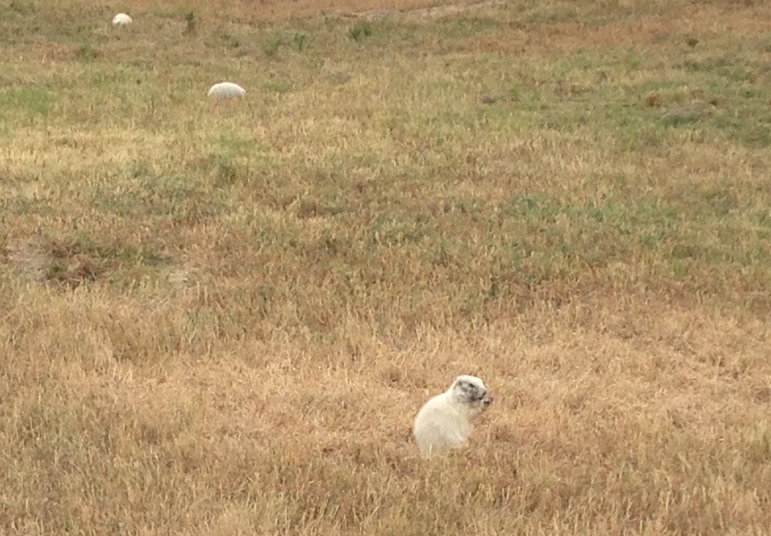
Thanks to my conference’s organisers, R and I were able to get about $20 off price of entry each, otherwise we probably wouldn’t have visited Biltmore House, the home of the Vanderbilts – the normal entry price is $50 per adult.
As with a number of historic houses in the US, they allocate ticket-holders time slots in which you can view the house. We had enough time before our slot to check out the grounds, but there were also restaurants where you could have spent the time – or the estate also includes a winery, in an area called ‘Antler Village’, where you can also find accommodation. The whole estate is 125,000 acres, so it’s best to visit by car – take care to read the signs for directions to the house, or you might find yourself headed the wrong way on a one-way system of slow estate roads…
Anyway, we eventually made it to the parking lot for the house and gardens, and went for a wander. While we were visiting in what was still pretty much winter, there were some things to see in the gardens.

It took us about an hour to while our way down to the Bass pond and back to the Italian Garden and South Terrace, walking through the Shrub Garden, the Spring Garden, the Azalea Garden, the Walled Garden, the Rose Garden and the Conservatory.


While the azaleas and roses weren’t out, there were plenty of Spring flowers in evidence, and some beautiful magnolia trees. We also saw Cypress Tree ‘knees’ for the first time! Of course, the Conservatory had plenty of flowering plants in its tropical-house atmosphere; it was clearly designed to display wealth – I’ve never seen so many orchids in one place.
As we walked up to the South Terrace and Italian Garden we began to appreciate the beauty of Biltmore’s setting. Asheville is located on the western Blue Ridge Mountains, but its also just to the east of the Great Smoky Mountains. Biltmore has panoramic mountain views, and some lovely terraces from which to enjoy them.

The house itself is a sight to see. We had been told that it was ‘crazy’, but we thought that might be in part because Americans are less used to stately homes. Biltmore is the largest privately owned house in America, at 178,926 square feet (thank you Wikipedia), but R and I respectively grew up near Blenheim Palace in Oxfordshire and Penrhyn Castle in Bangor.
But it’s true. Biltmore is crazy. As we walked along the South Terrace we encountered the almost French Chateau style towers, with their strange diagonal windows, its Tudor chimneys, and Gothic crenelations, and then we walked through the Italian garden with its faux Roman/Greek statues. It was a bit bewildering.

As we followed the self-guided tour around the house we became confirmed in our view that this place is really a monument to a family with a lot of money and no taste. We couldn’t help but compare this palace to the modest homes of Washington and Jefferson. Biltmore was just crammed with as much treasure as could be seized from the Old World as possible. The thing that most amazed me was that one of the ceilings had been painted by a Renaissance Italian painter – they had transported the entire thing from Italy! They also had Napolean’s chess set…
The Vanderbilt who commissioned the house was not the famous industrialist and ship builder, Cornelius Vanderbilt, but his grandson, George. Born into the Vanderbilt fortune, his brothers managed the family business while he whiled away his time in study, building this house, and the pursuits of a country gentleman. We found it very strange that the dining room of Biltmore was decorated with flags from the war of independence, for this family that seemed to be intent on reproducing the British class system in the new Republic.
Apart from the sheer amount of treasure, the house did just seem like a turn-of-the-century British stately home; American fans of Downton Abbey must love it. The things that stood out for us though were the expensive modern touches that British families hadn’t been able to afford in the early twentieth century as war, social change and economic downturns altered their way of life. At Biltmore, in this period, the Vanderbilts and their other rich friends had plenty of fun. There was a games room with not one, but two billiard tables, a bowling alley, and an indoor swimming pool and gym complex, complete with changing rooms!
It took us about an hour to tour the house, and by the end we were a little shell-shocked, and in need of our beer and oysters (see my last post). Overall I found Biltmore a little much. But I certainly wouldn’t have minded waking up to those views every day.
Read other posts in this series:

































